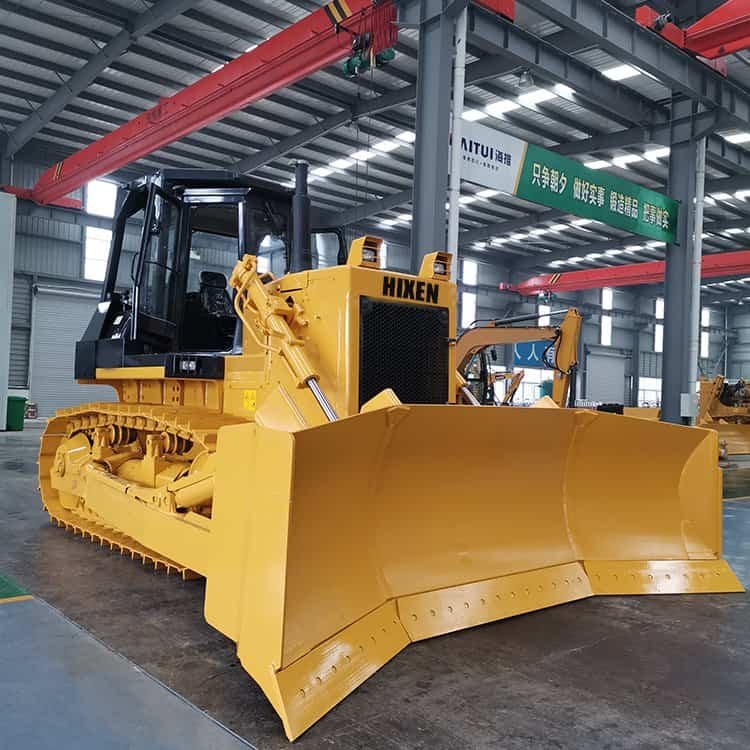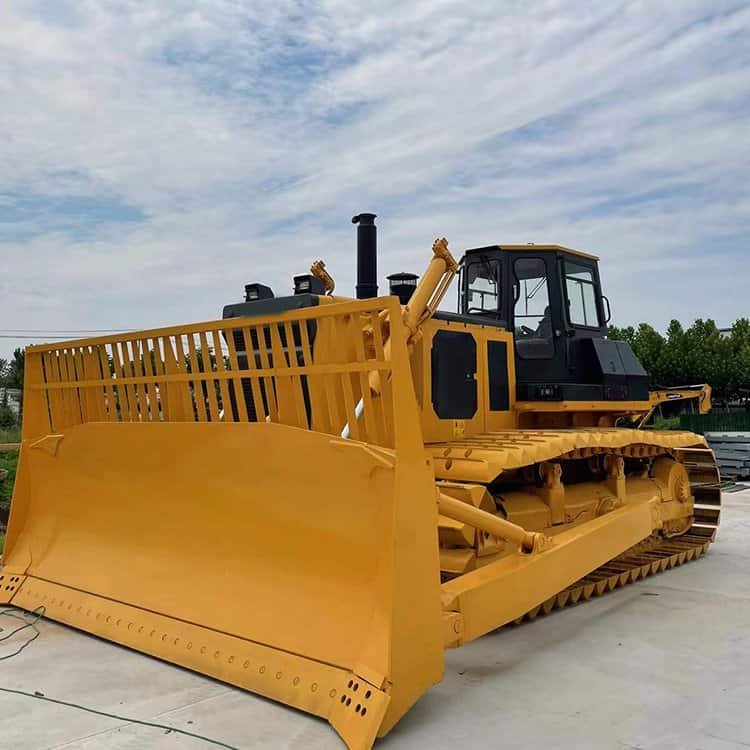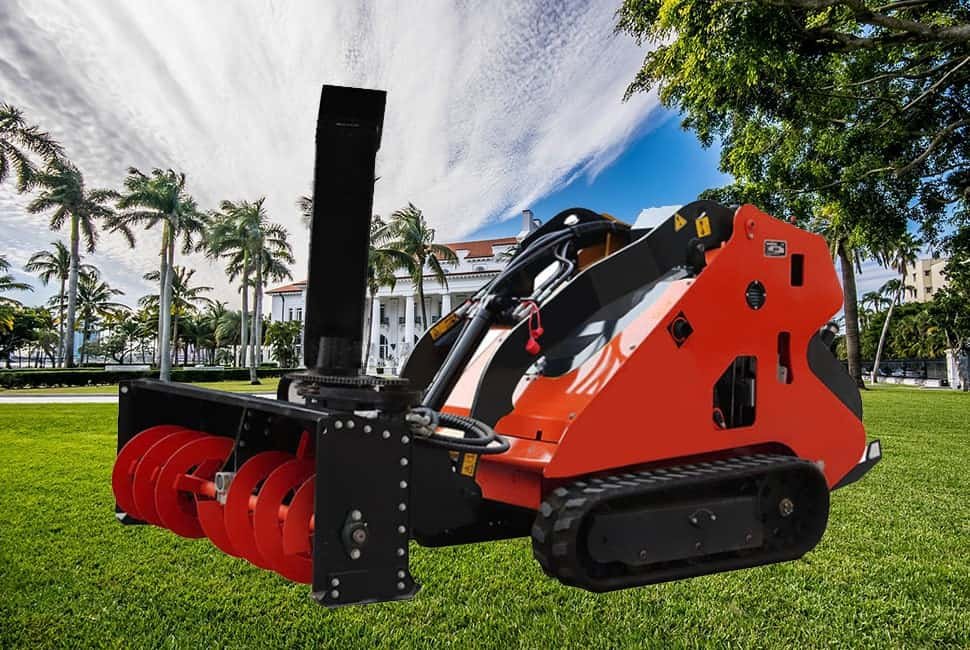Have you ever wondered what a bulldozer is and how it plays a crucial role in construction and mining industries? This powerful machine is not just a heavy-duty piece of equipment but a vital asset for land clearing, earthmoving, and many other tasks. Understanding the features and applications of a bulldozer can help you make informed decisions when choosing the right machinery for your project.
A bulldozer is a heavy-duty machine designed primarily for moving large amounts of earth, rocks, or debris. Equipped with a powerful engine and a wide blade at the front, it is an essential tool in construction, mining, and roadwork, allowing operators to level land, push material, and clear obstacles efficiently.
Now that we know what a bulldozer is, let’s take a closer look at how it works, its different types, and its numerous applications in various industries.
Qu'est-ce qu'un bulldozer?
A bulldozer is a robust and versatile construction machine commonly used for land clearing, leveling, and earthmoving. It features a large blade at the front, capable of pushing vast amounts of soil, rocks, or debris, making it an indispensable machine on construction sites.
Primarily designed for heavy-duty tasks, bulldozers are equipped with powerful engines and large tracks or wheels to ensure stability and traction in various environments. The blade attached to the front can be adjusted in different angles to allow for more precise movements when pushing materials or leveling land.
Bulldozers come in two main types: tracked and wheeled. Tracked bulldozers are perfect for rough or soft terrains because their continuous tracks provide excellent stability and prevent them from sinking into soft ground. On the other hand, wheeled bulldozers are more suited for smooth, flat terrains such as roads or hard surfaces, where high speed is a priority.

Comment fonctionne un bulldozer?
The bulldozer operates based on a powerful engine and a track system that evenly distributes weight and provides exceptional traction. By adjusting the blade, the bulldozer can move materials efficiently and level large areas of land.
Bulldozers work by using hydraulic systems to control the movement of the blade. The blade can be raised, lowered, or tilted to suit different work needs. The power and versatility of the bulldozer make it an essential machine for pushing material, clearing obstacles, or even grading land.
The engine’s power plays a critical role in bulldozer performance. Typically, bulldozers are equipped with engines ranging from 200 to over 500 horsepower. The choice of engine size depends on the intended job site conditions—larger engines are needed for pushing large amounts of material in challenging terrains. The hydraulic system that controls the blade and other attachments also helps in adjusting the machine’s function according to the task at hand.
What are the Different Types of Bulldozers?
Bulldozers are versatile machines that come in a variety of types, each meticulously designed to perform specific tasks with precision and efficiency. Every component, from the tracks to the blade types, is engineered to meet the unique demands of different work environments and applications.
There are two primary categories of bulldozers: tracked and wheeled. Tracked bulldozers are equipped with continuous tracks that offer exceptional traction on soft, rough, or uneven terrain. This makes them ideal for challenging environments such as mining sites, forestry operations, and other tasks construction where rugged terrain is common. On the other hand, wheeled bulldozers feature rubber wheels that are better suited for smoother surfaces and faster operation, making them a preferred choice for road building and urban development projects.

Beyond their basic configurations, bulldozers can be further customized to suit specific job requirements. This customization often involves selecting from various blade types, each designed to excel in different working conditions. For instance, straight blades (S-blades) are ideal for fine grading and cleaning up surfaces, universal blades (U-blades) are perfect for moving large volumes of soil, and semi-universal blades (SU-blades) offer a balance between the two, providing versatility for a range of tasks. By choosing the right blade type, operators can optimize their bulldozers for maximum efficiency and effectiveness in any given project.
What are the Applications of a Bulldozer?
Bulldozers are incredibly versatile machines that are indispensable across a wide range of industries, including construction, mining, and agriculture. Whether you need to prepare land for development, move massive amounts of material, or tackle challenging terrain, a bulldozer is often the go-to solution.
These powerful machines are used in a variety of applications. In construction, bulldozers are essential for clearing debris, leveling sites, and pushing materials like dirt, sand, or gravel into place. Their robust design and powerful blades make them perfect for creating a solid foundation for new buildings or infrastructure projects. In the mining industry, bulldozers are used to remove overburden, push large piles of rock, and prepare mine sites for further excavation. Their ability to handle heavy loads and navigate rough terrain makes them a crucial tool in the mining process.
Bulldozers are also widely used in agriculture for tasks such as land clearing and soil preparation. They can help farmers remove obstacles, level fields, and create ideal conditions for planting. Additionally, bulldozers equipped with specialized attachments can be used for forestry and land reclamation projects, making them a versatile tool for environmental management.

Beyond these primary applications, bulldozers are also used for snow removal, demolition work, and clearing paths for other machinery or vehicles in tough terrains. Their versatility and power make them a valuable asset in any situation where heavy-duty land preparation or material movement is required.
How to Choose the Right Bulldozer for Your Project?
Choosing the right bulldozer for a particular project involves understanding the terrain, material type, and the size of the job. Factors like engine power, blade type, and machine weight can all influence performance and efficiency.
To select the right bulldozer, consider the nature of the terrain, the required pushing power, and the job size. A large, tracked bulldozer is ideal for heavy-duty work in rough or swampy conditions, while a wheeled bulldozer is more appropriate for faster tasks on smooth surfaces.
When choosing a bulldozer, it’s important to assess the scale of the project. Larger machines with higher horsepower can handle extensive workloads, while smaller, more compact bulldozers are better suited for lighter, more precise tasks. Also, don’t forget to choose the appropriate blade type—universal blades are great for general use, while straight blades are ideal for pushing material in a straight line.
Is a Bulldozer the Same as a Digger?
Many people confuse bulldozers with diggers, especially since both are essential machines in earthmoving. However, these machines are designed for very different tasks.
While a bulldozer is used primarily for pushing and leveling material, a digger (or excavator) is designed for digging, lifting, and removing materials. The bulldozer’s primary function is to clear land and move large amounts of material, while diggers are used for digging trenches or holes, making them more specialized in excavation tasks.
While bulldozers are often seen on construction and mining sites for their ability to clear land, diggers (excavators) are typically used to dig deeper into the earth and to lift and move smaller amounts of material. If your job requires significant excavation, a digger might be the better choice, but for heavy pushing and clearing tasks, a bulldozer is more efficient.
What are the Different Types of Bulldozer Blades?
Bulldozers come with various types of blades, each designed to perform specific tasks. The blade you choose can impact how effectively your bulldozer works on a particular job site.
Some of the most common bulldozer blade types include straight blades (S-blades), universal blades (U-blades), and semi-universal blades (SU-blades). Each blade type offers unique advantages, such as better pushing force or the ability to carry more material.

Straight blades are ideal for pushing materials in a straight line, while universal blades are more suitable for handling larger volumes of material and can be adjusted to handle tougher terrain. Semi-universal blades combine the benefits of both, providing excellent versatility in various applications. Choosing the right blade is essential to improving productivity and minimizing machine wear and tear.
What are the Main Parts of a Bulldozer?
A bulldozer is made up of several critical components that work together to ensure optimal performance. Understanding these parts can help operators make better decisions regarding maintenance and functionality.
The main parts of a bulldozer include the engine, tracks or wheels, hydraulic system, and the blade. These components work in unison to ensure the bulldozer can push, level, and clear materials efficiently.
The engine provides the necessary power, while the tracks (on tracked bulldozers) or wheels (on wheeled bulldozers) provide the necessary traction. The hydraulic system controls the movement of the blade, enabling it to tilt, raise, or lower according to the operator’s needs. Regular maintenance of these parts is essential to keep the bulldozer running smoothly and prevent downtime.
Résumé
Bulldozers are powerful machines used in a variety of construction, mining, and agricultural tasks. Understanding their types, functions, and key components can help you choose the right one for your project and ensure maximum efficiency.


